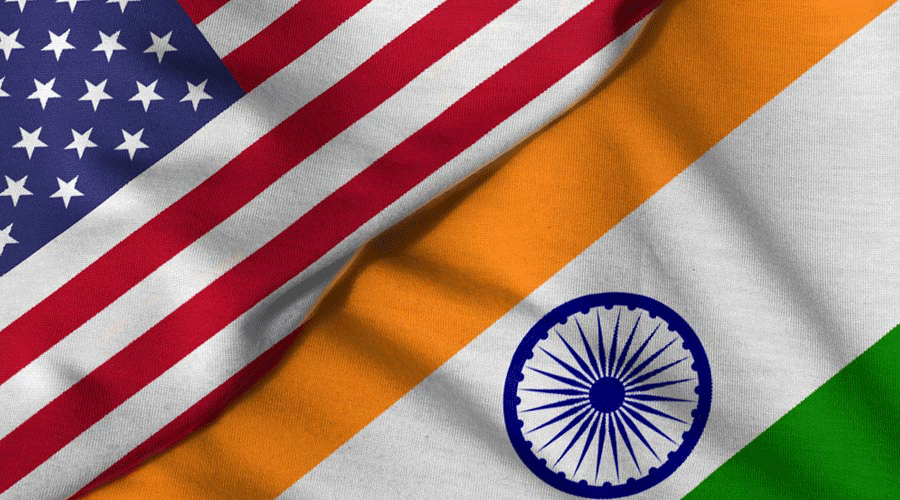Of the view that there is an unprecedented opportunity for India-US defence co-production, a US-based think-tank dedicated to addressing policy challenges has said that operationalising more defence industry partnerships between the companies of the two countries is contingent on commercial and regulatory factors.
In a report titled "Precision Targets: Accelerating the US-India Defense Industrial Partnership" that was released on Thursday, the Observer Research Foundation (America) said that there is a requirement for making a strong business case for long-term investments and technology transfers, ensuring predictable demand in India.
“The US-India defence industry partnership is ripe for acceleration given a range of factors, spanning supportive domestic policies and favorable geopolitics, including the urgent circumstances that have arisen due to the war in Ukraine,” ORF (America) said in the report.
“Capitalising on these factors will require making a strong business case for long-term investments and technology transfers, ensuring predictable demand in India, improving public-private cooperation in both countries, and translating high-level political agreement into tangible outcomes,” the report further added.
Observing that the inauguration of the US-India initiative on Critical and Emerging Technologies (iCET) in early 2023 has created greater momentum for bilateral defense industrial cooperation, ORF (America) said recent developments have created new openings.
Many old impediments, including stifling export controls, insufficient enabling agreements, and lack of political engagement, have largely been addressed.
On the Indian side, elements of an industrial policy that involve the private sector have begun to take shape, creating more attractive conditions for private investment and supply chain integration.
Geopolitical factors are also more conducive, given the growth in India-US coordination on the Indo-Pacific and the declining relevance of US-Pakistan security cooperation, it said.
Meanwhile, wartime attrition, supply chain disruptions, and secondary sanctions will create challenges for Russia’s 1,300 defense companies – which account for 20 per cent of the world’s weapons sales – resulting in a partial vacuum in the global arms market.
Other actors are already seeking to fill some of that gap, the report said.
“Taken together, these circumstances present an unprecedented opportunity for India-US defense co production. But this will require translating the tremendous political progress at the government-to-government level into concrete outcomes at the business-to-business level,” the report said.
Priority areas discussed in iCET include jet engines and munition related technologies, but coproduction could extend to anti-tank and anti-air missile systems, fixed-wing and rotary aircraft, armoured vehicles, artillery, small arms, maritime surveillance systems, drones and counter-unmanned aerial systems (C-UAS), and maintenance, repair, and overhaul (MRO) facilities and services.
In addition to creating a viable commercial basis for defense co production, the two governments could take several discrete policy steps to facilitate and accelerate such cooperation.
This would include: (a) translating political agreement into outcomes such as approvals and procurement requests, (b) ensuring a greater predictability for demand on the Indian side to accelerate investment and technology transfers, and (c) on the US side, improving public-private cooperation to ensure timely responses to proposals, it said.
From a value proposition perspective, the major categories of potential US-India joint ventures would include anti-tank and anti-air missile systems, ORF (America) said.
In addition to missile systems, aircraft, aircraft engines, and marine turbines represent the most lucrative opportunities in the global arms market, it said.
Armoured vehicles, artillery, small arms, and munitions are other high potential products for US-India partnerships, the report said, adding that among emerging systems, there is considerable interest in both drones, counter-unmanned aerial systems (C-UAS), and maritime surveillance systems.
“A final and highly promising area of partnership is maintenance, repair, and overhaul (MRO). US-India partnerships on MRO could service demand in India as well as more broadly, including South Asia, Southeast Asia, the Middle East, and East Africa. US-supported MRO facilities in India could also have strategic importance given the high and increasing number of joint military exercises and coordination by the US, India, Quad partners, and other countries in the Indo-Pacific,” the report said.
“The repairs and allied services of the USNS Charles Drew in India in August could be the start of a wide suite of operations to support the military assets of India, the United States, and their partners,” it said.
PTI
Except for the headline, this story has not been edited by The Telegraph Online staff and has been published from a syndicated feed.










